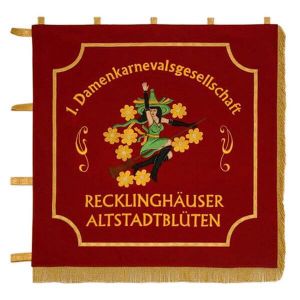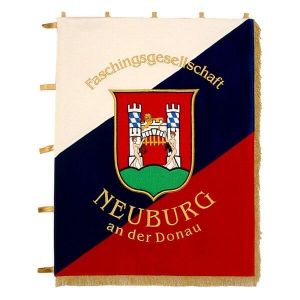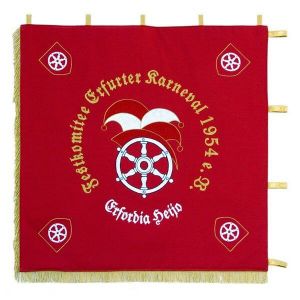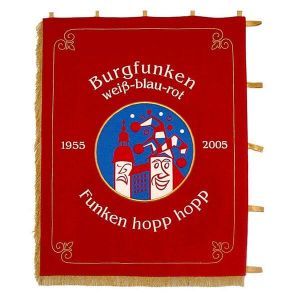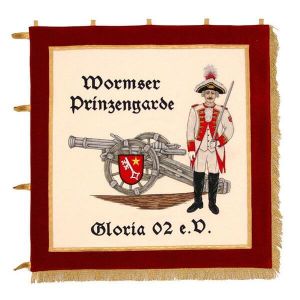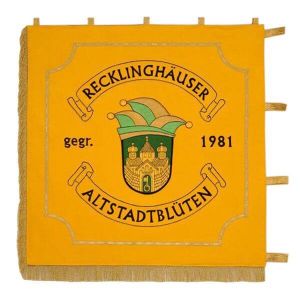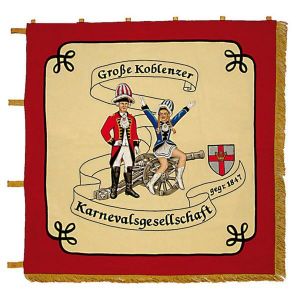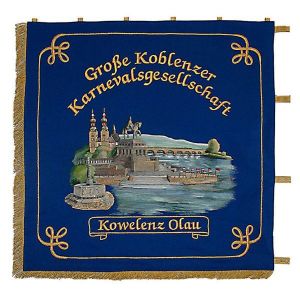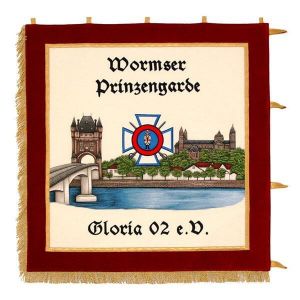Standards for carneval clubs
Celebrating carneval - but well organized
How miserable would our life be if it only consisted of work? Since the beginning of mankind, we feel a strong desire to celebrate festivities and forget everyday life for a short period of time. And because this is done best in company, people have always come together in clubs. Fools' caps of court jesters or colorful masks as they are used for dressing up lend themselves as symbols. Thus, flags and standards of carneval societies or fools' clubs are recognizable from afar already.
This email address is being protected from spambots. You need JavaScript enabled to view it.
Switching roles and masquerading
In the traditions of almost all peoples one can find customs that hint at a temporary switching of roles between master and servant, supervisor and slave. Up till now, the mayors of our municipalities hand over the keys of the townhall when the fools' prince and princess couple ask for it during the carneval season. The underlying principle of equality shall be valid at least for a short period of time. And as it won't last for a very long time, it has to be celebrated in a respectivly noisy, colorful and crazy way. Flags and standards form a suitable frame for the festivities.
Benefit for the common public
In our modern times with flag hierarchies, the switching of roles is no longer an essential criterion for the foundation of communities in clubs and associations. The maintenance of customs that our state regards as beneficial to the common public and accordingly funds it, stands rather in the foreground. Thus, on the standards, many carneval associations and clubs bear the abbreviation "e.V." for an incorporated society behind their names.
From the fools' medal to the embroidered banner
The parades of fools on Carnival Monday ("Rosenmontag") and Mardi Gras/Shrove Tuesday ("Faschingsdienstag") belong to the most colorful in the whole world. Hand-sewn and embroidered fools' caps belong to them as well as stamped and printed fools' medals. The music bands hang embroidered and printed banners on their instruments, and the standards show the regionally common carneval calls and motives.

 English
English  Deutsch
Deutsch 